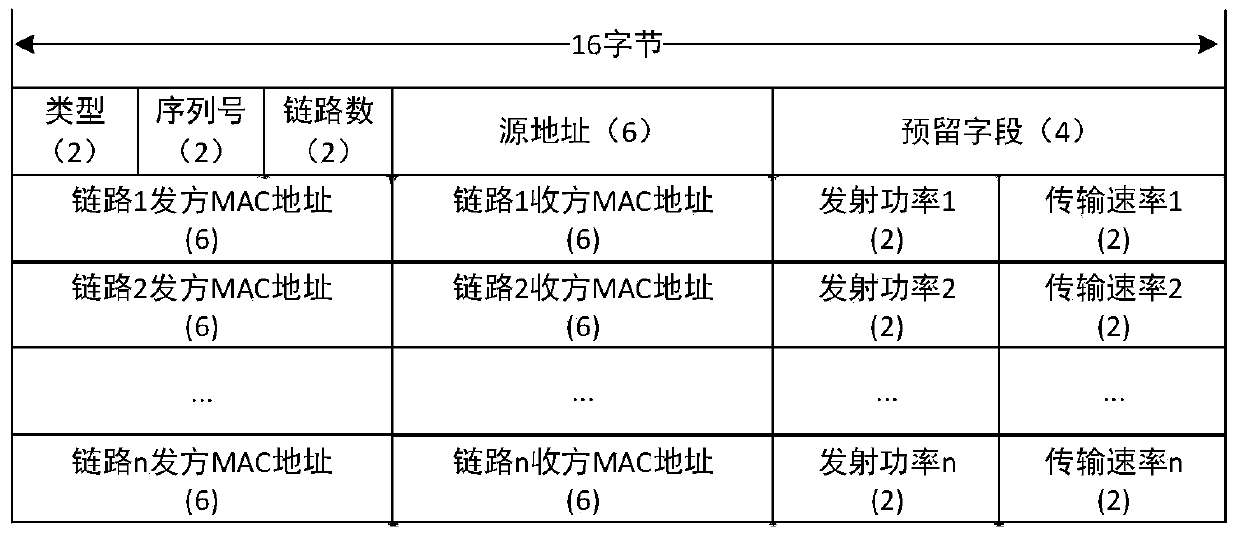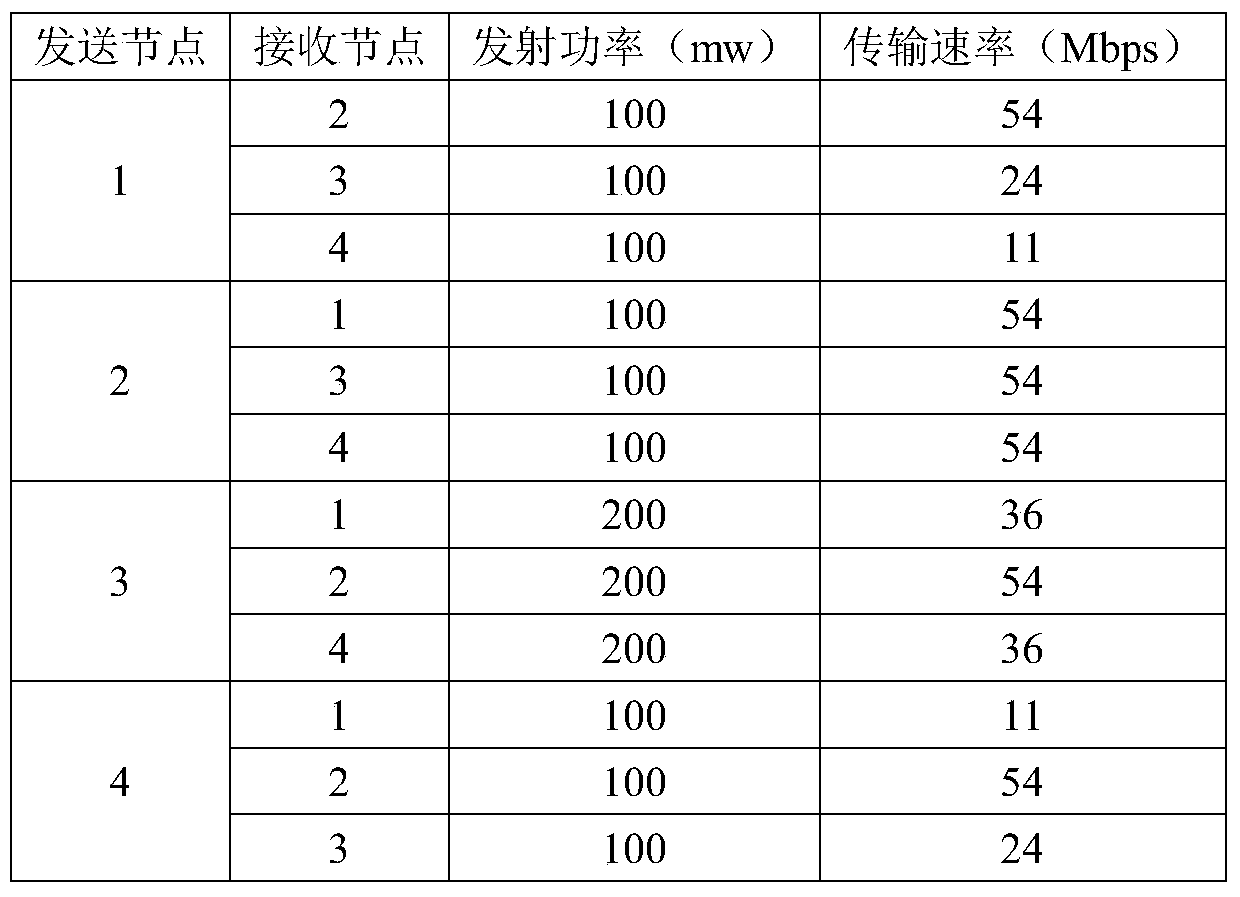Energy Efficiency Priority Method for 802.11 Ad Hoc Networks Based on Cooperative MAC Protocol
A self-organizing network and MAC address technology, applied in the field of 802.11 wireless local area network communication, can solve problems such as lack of comprehensive consideration, and achieve the effect of optimizing transmission energy consumption, realizing energy efficiency, and optimizing wireless transmission rate
- Summary
- Abstract
- Description
- Claims
- Application Information
AI Technical Summary
Problems solved by technology
Method used
Image
Examples
Embodiment Construction
[0024] The present invention will be further described below in conjunction with the accompanying drawings and specific embodiments. In the field of LAN communication, in the RTS-CTS-DATA-ACK handshake protocol based on CSMA (Carrier Sense Multiple Access) / CA (Collision Avoidance, collision avoidance) in 802.11b / g, the source node i directly The time required to transmit a packet to destination node j is:
[0025]
[0026] where T SIFS : Short frame interframe interval; T DIFS : Long frame interframe interval; T RTS : Time required for RTS transmission; T CTS : Time required for CTS transmission; Time required for data transfer.
[0027] Because in 802.11b / g, RTS, CTS, and ACK are transmitted at a rate of 1Mbps, while the transmission rate of DATA is greater than or equal to 1Mbps. All nodes within its sensing range can correctly demodulate RTS, CTS, and ACK, but they may not be able to correctly extract DATA frames, because the transmission rate of DATA frames is ge...
PUM
 Login to View More
Login to View More Abstract
Description
Claims
Application Information
 Login to View More
Login to View More - Generate Ideas
- Intellectual Property
- Life Sciences
- Materials
- Tech Scout
- Unparalleled Data Quality
- Higher Quality Content
- 60% Fewer Hallucinations
Browse by: Latest US Patents, China's latest patents, Technical Efficacy Thesaurus, Application Domain, Technology Topic, Popular Technical Reports.
© 2025 PatSnap. All rights reserved.Legal|Privacy policy|Modern Slavery Act Transparency Statement|Sitemap|About US| Contact US: help@patsnap.com



